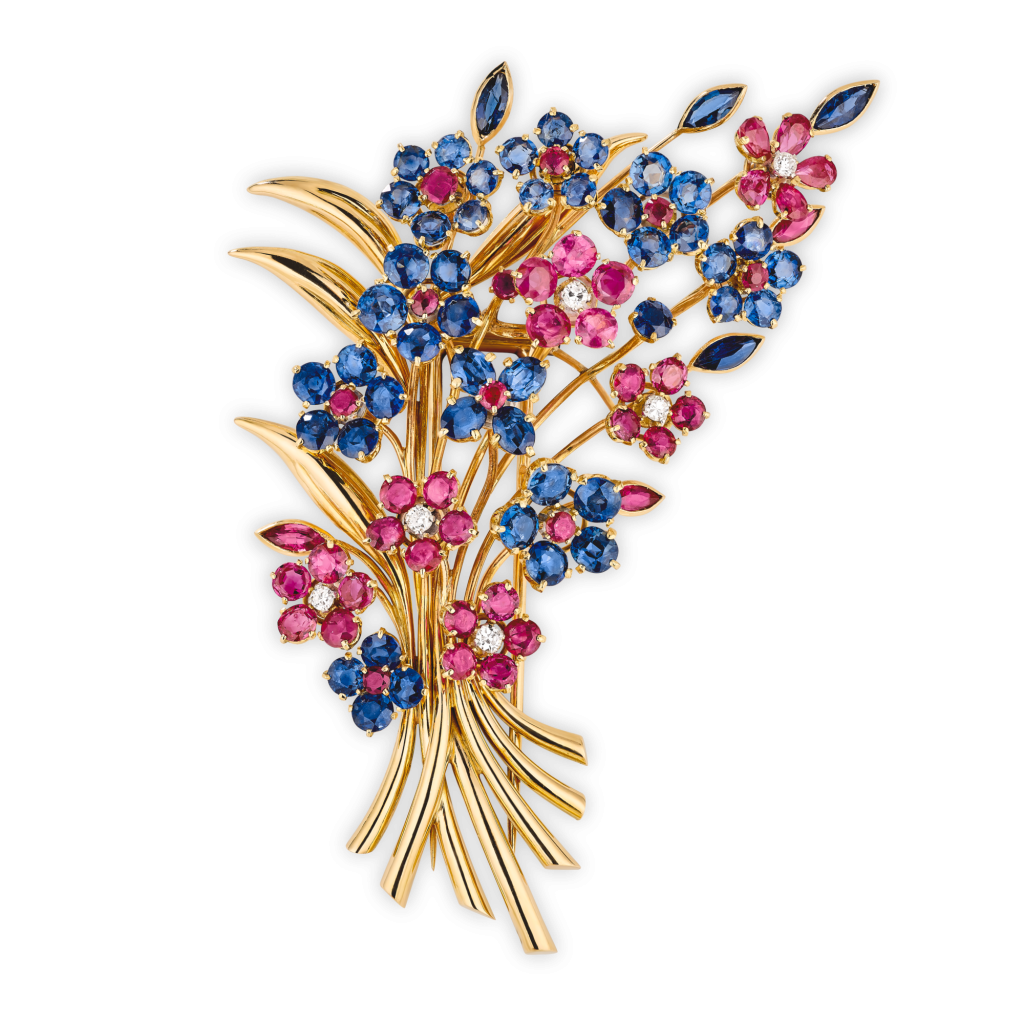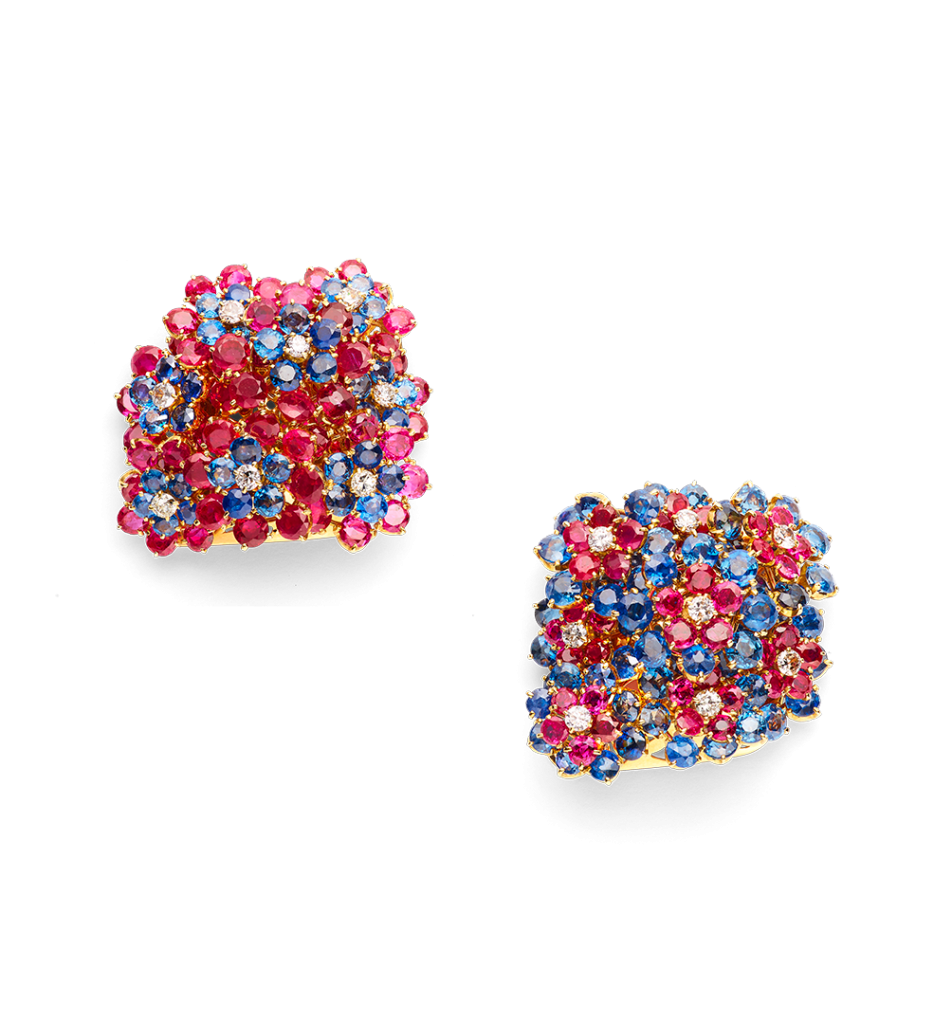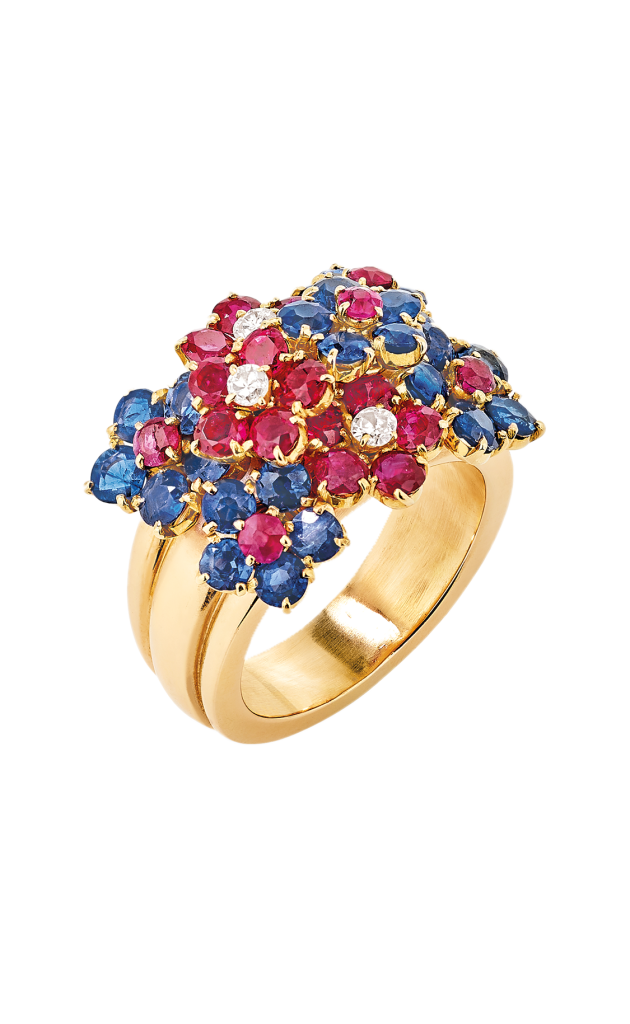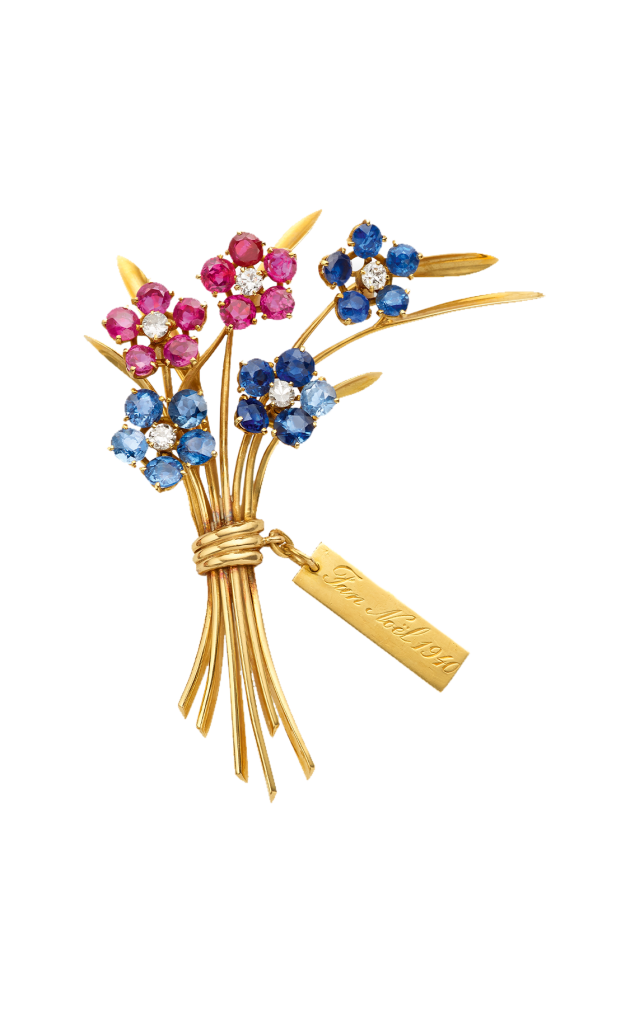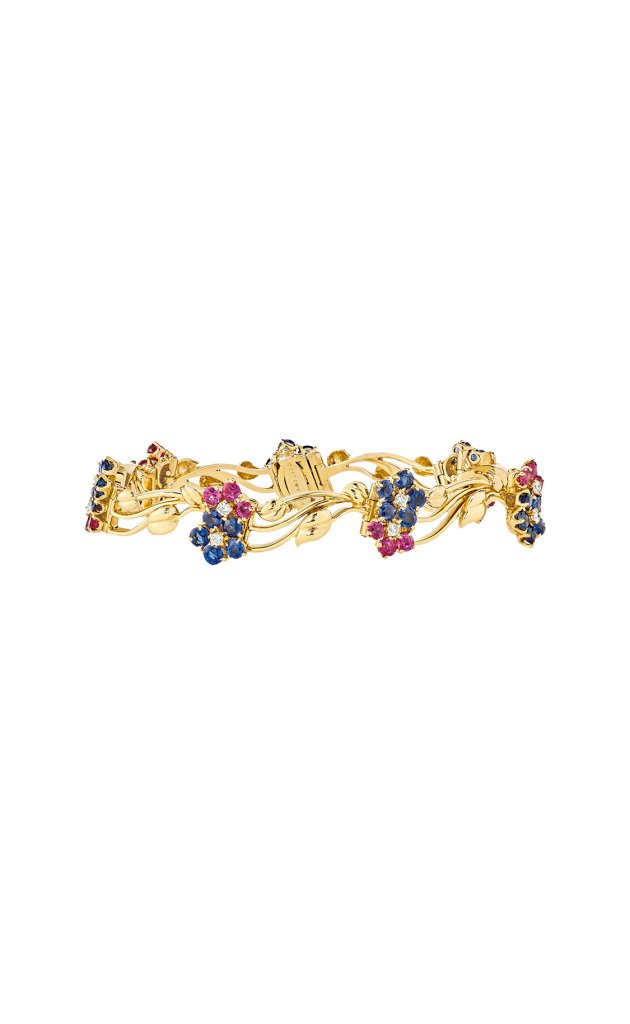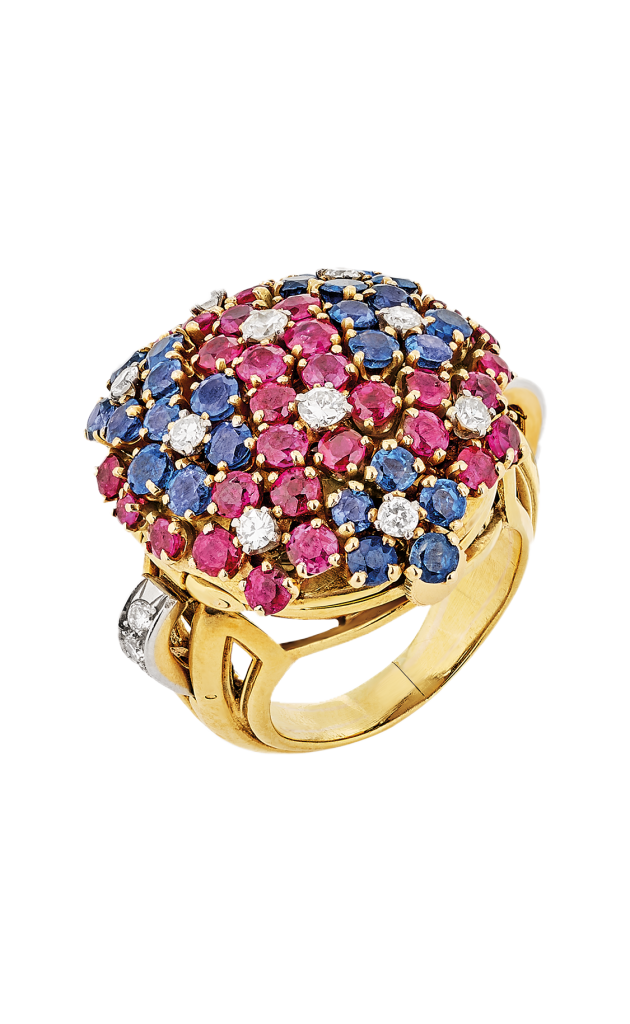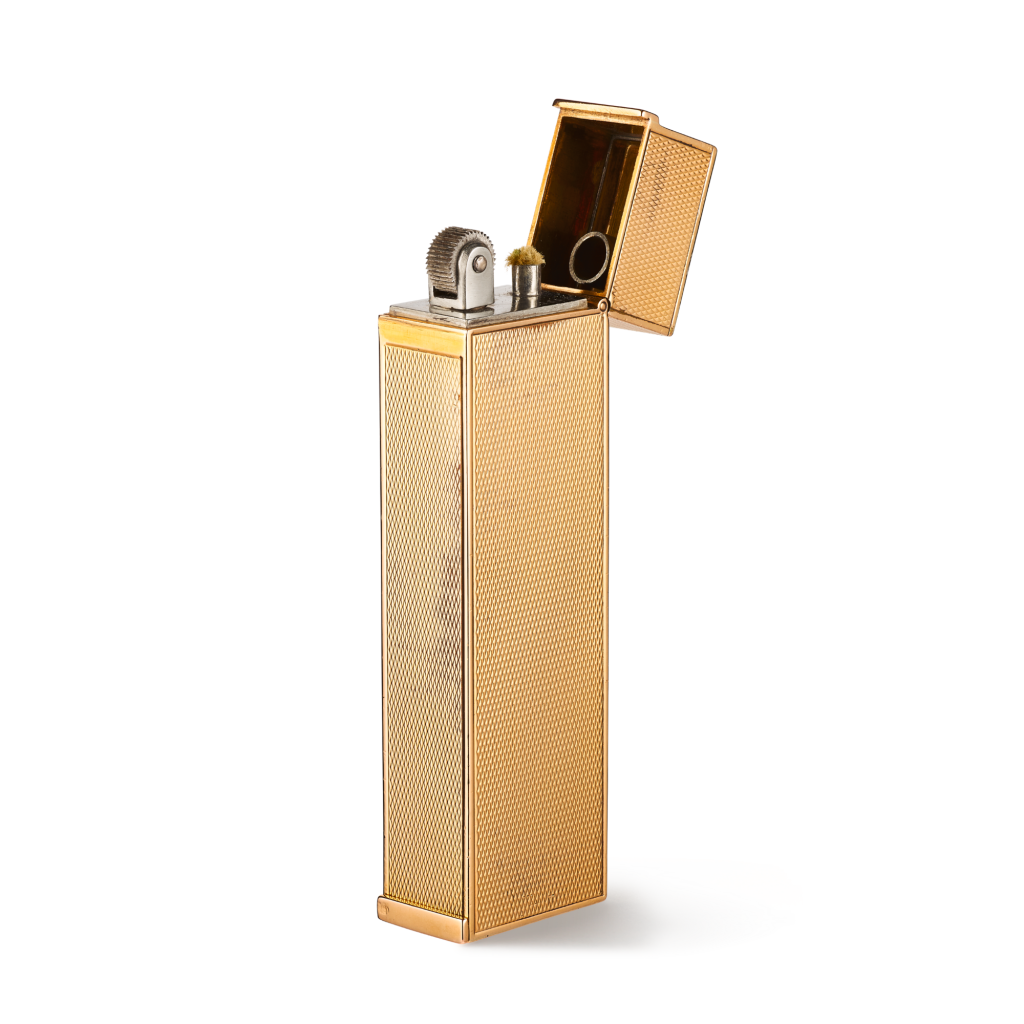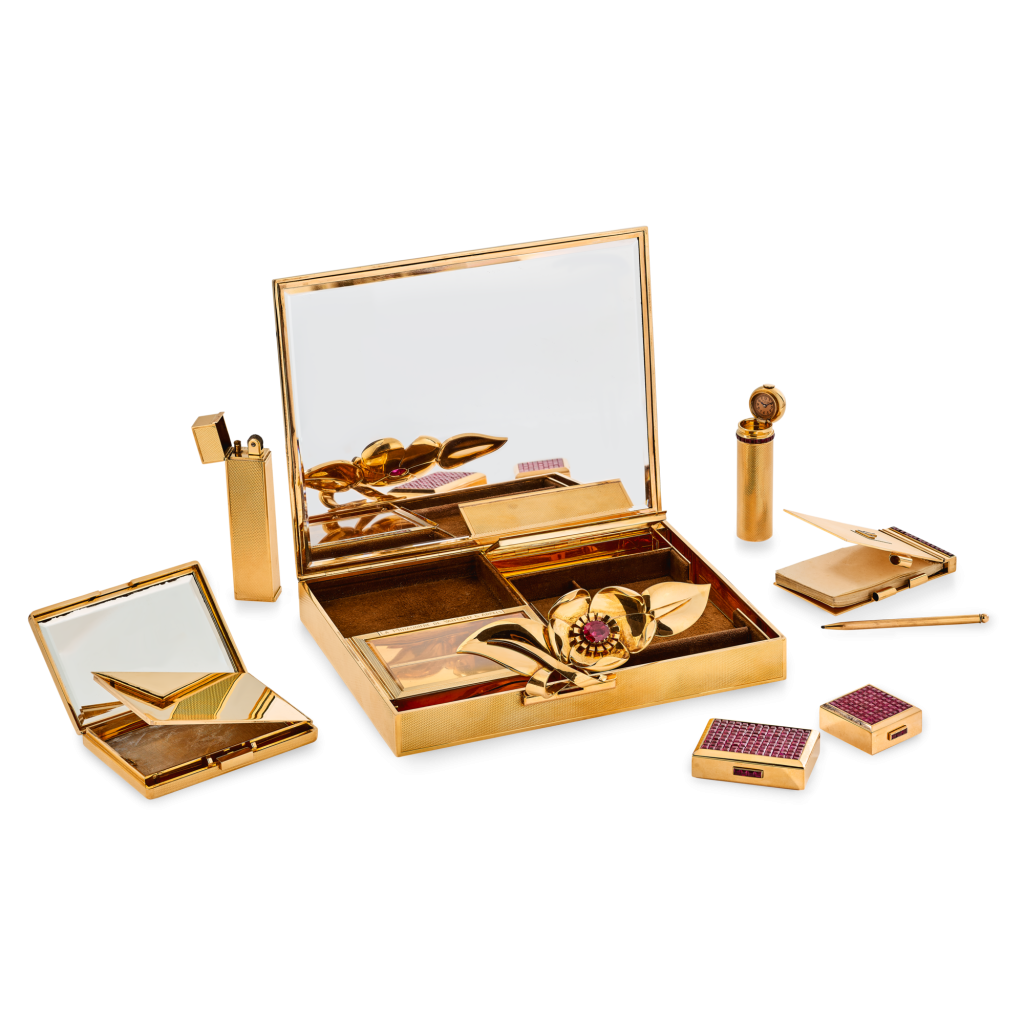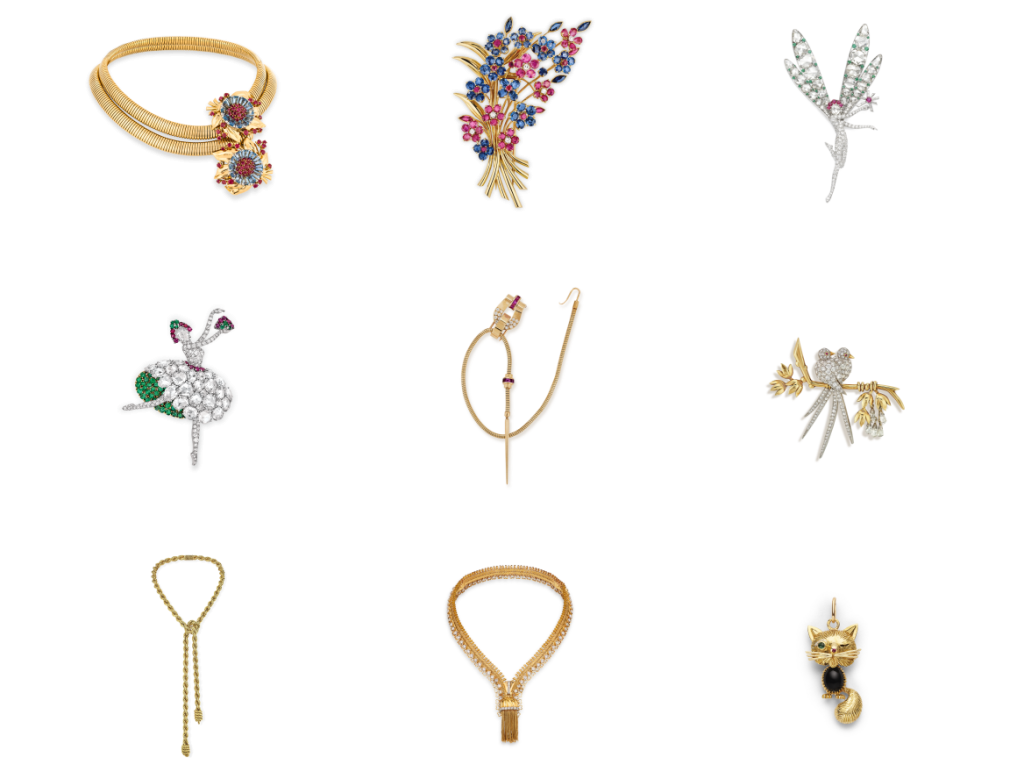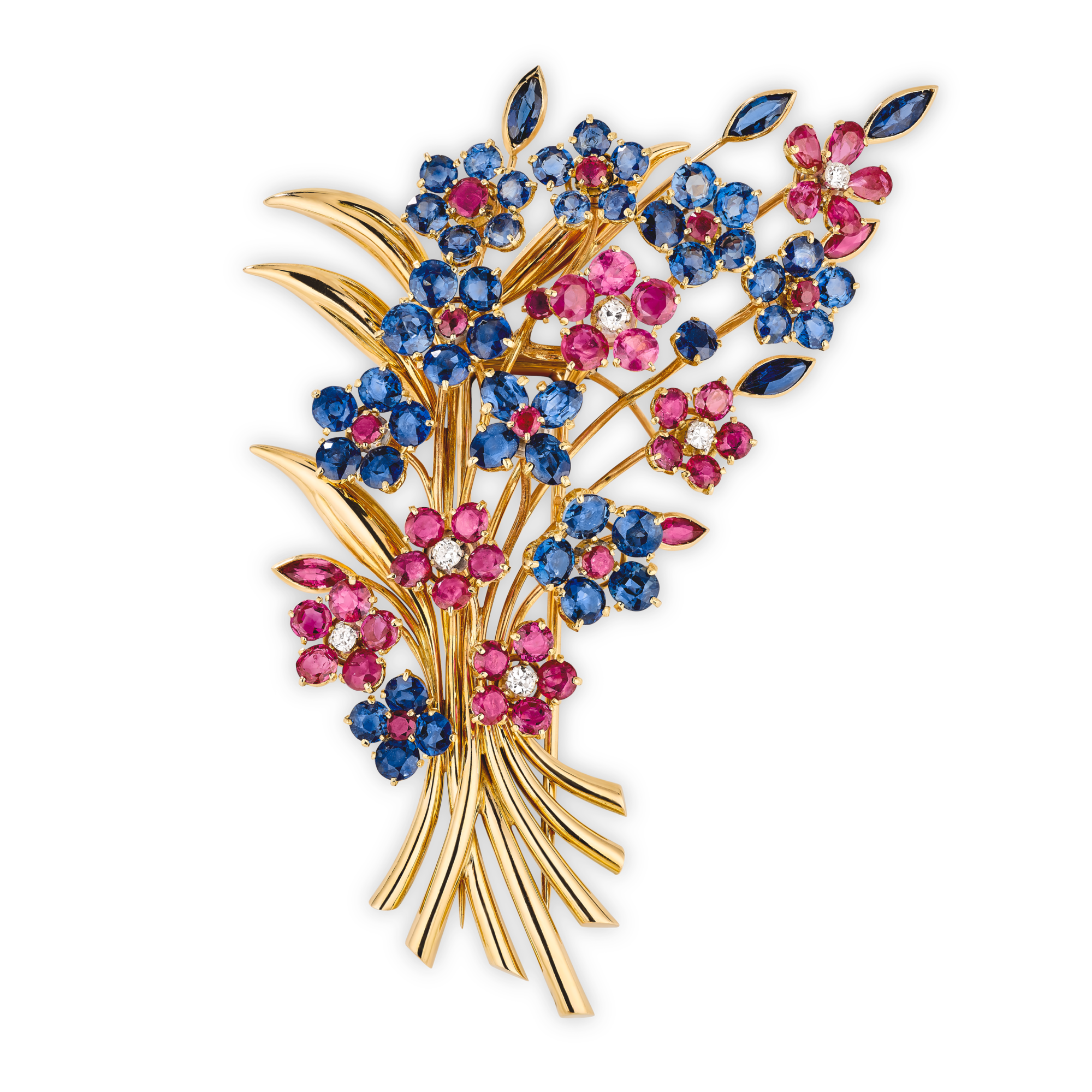
Hawaii Bouquet clip
Creation details
- Creation year 1938
- Stone Diamond
- Stone Ruby
- Stone Sapphire
- Material Gold
- Usage Clip
- Dimensions 90 × 60 mm
The Hawaii collection was first introduced in 1938, and consisted of small flowers with varying numbers of petals, combining rubies, sapphires, and diamonds. This clip version shows a posy of stylized flowers attached to seven polished yellow gold stalks.
Some of the flowers have a brilliant-cut diamond heart with petals of claw-set rubies, while others have ruby hearts surrounded by sapphire petals. Bezel-set buds of navette-cut rubies and sapphires add life to the composition, together with gold leaves.
Multiple variations
The first Hawaii creations declined different jewel typologies. In addition to the Bouquet clips, earrings, bracelets, rings, and even watches were dotted with small blue and red flowers.
The origin of the name “Hawaii”
These pieces were originally called “fleurettes,” adopting the name “Hawaii” in December 1938. The previous month, the collector and famous socialite Doris Duke had acquired a “fleurettes” ring and bracelet. She was very fond of the Hawaiian archipelago and had purchased a property on the island of Oahu in 1936.1The Associated Press, “Cromwells Buy Home Site In Hawaii for $100,000,” The New York Times (April 5, 1936): 35. While there is no proof that this connection lay behind the renaming of this collection, the choice of name nonetheless illustrates the obsession of members of the Café Society at that time for these islands, reputed for their beauty and geographical remoteness—airplane connections only started in 1936.2Christian Huetz de Lemps, “Le tourisme dans l’archipel des Hawaii,” Les Cahiers d’Outre-Mer (1964): 13–20.
A gouaché in the Maison’s archives confirms the analogy between the name given to this collection and the Pacific islands. It shows a set of Hawaii jewels with, in the background, two palm trees on a beach at sunset.
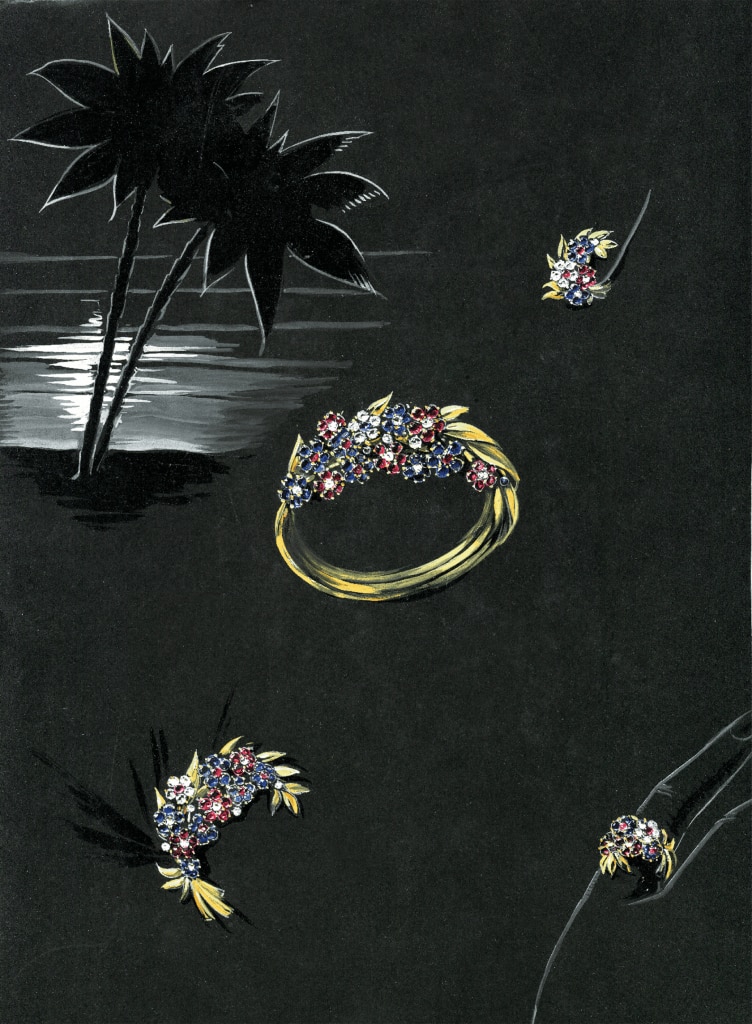
A major position at the New York’s World Fair
The Hawaii creations held an important place in the Maison’s oeuvre, as seen in their presentation at the 1939 New York World’s Fair. A drawing of the Van Cleef & Arpels stand, made for the occasion, shows a set composed of brooches, a ring, a hat ornament, and a Passe-Partout—one of the Maison’s most important inventions of the late 1930s—with florets of sapphires, rubies, and diamonds. Together with the Minaudière, these pieces celebrate three of the Maison’s major innovations, highlighting the position the Arpels family occupied in the United States from this point forward.
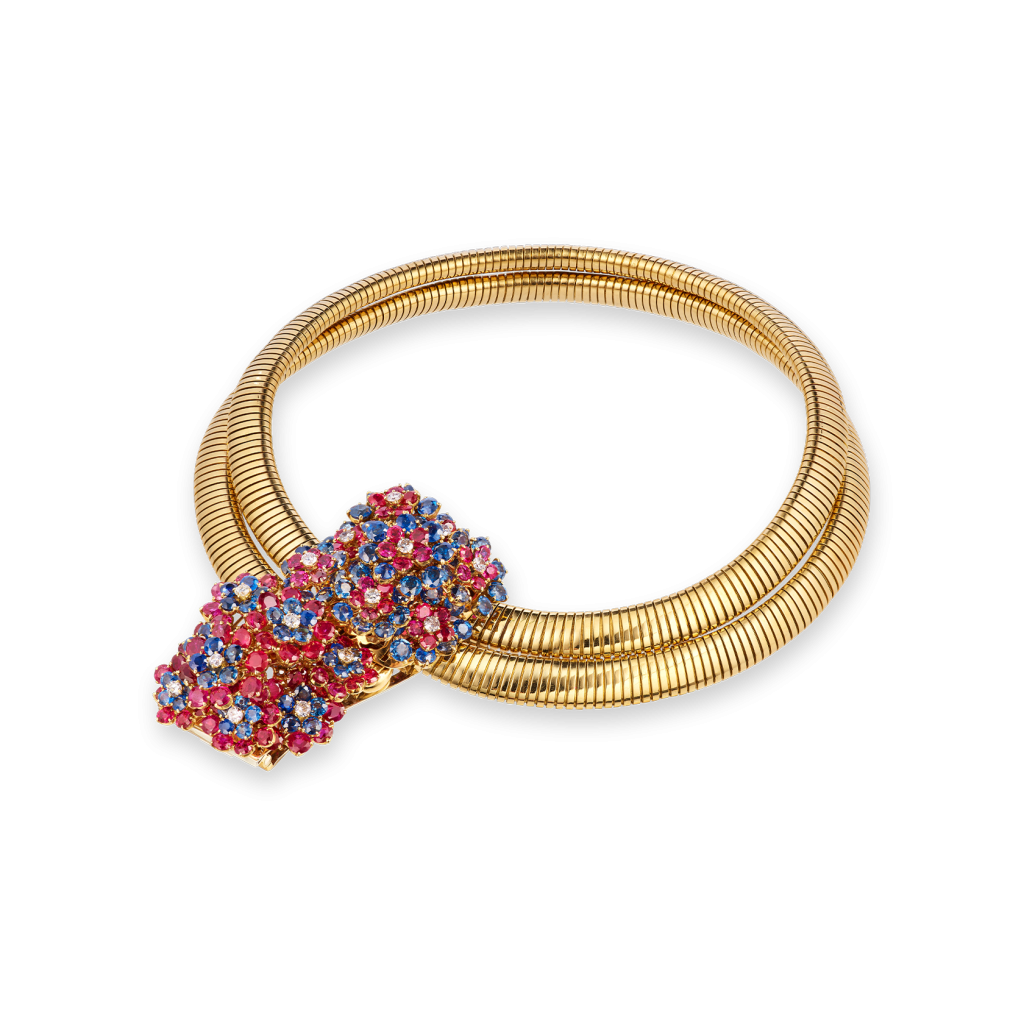

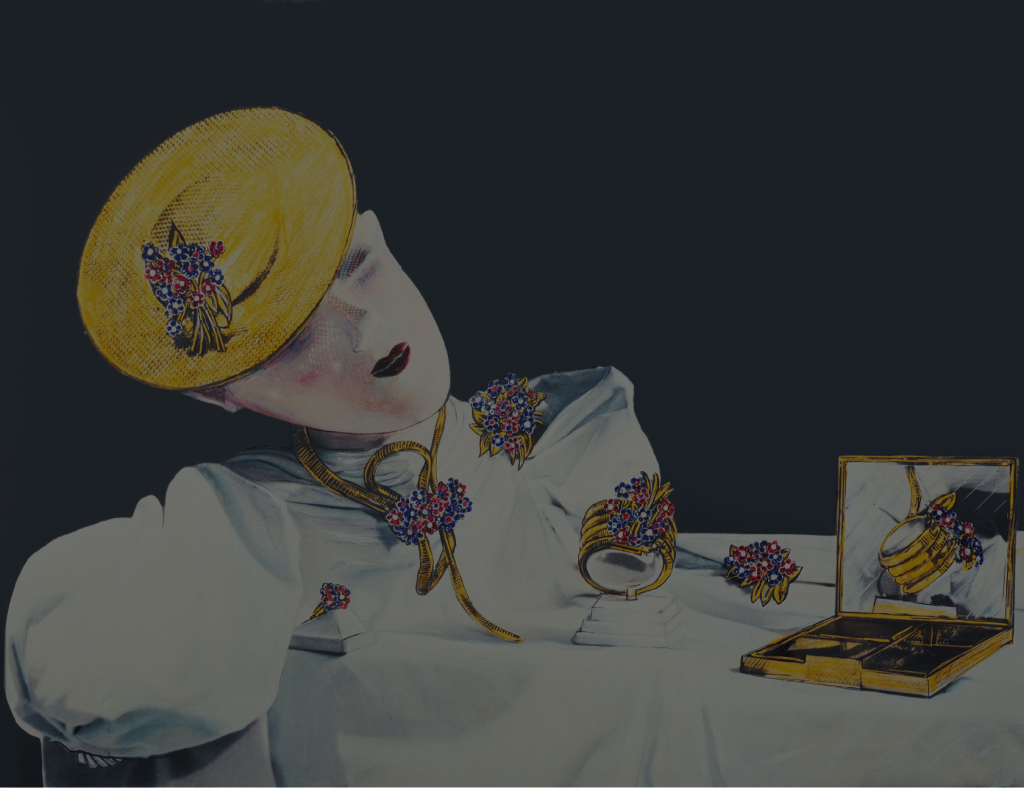
To go deeper
